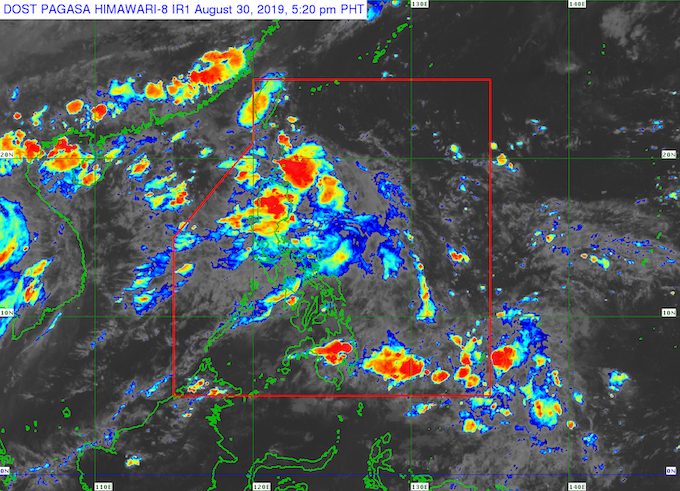SUMMARY
This is AI generated summarization, which may have errors. For context, always refer to the full article.

What’s the weather like in your area? Tweet us at @rapplerdotcom.
MANILA, Philippines – A low pressure area (LPA) formed inside the Philippine Area of Responsibility (PAR) on Friday morning, August 30, while a shallow LPA is being monitored outside PAR.
In a briefing past 4 pm on Friday, the Philippine Atmospheric, Geophysical, and Astronomical Services Administration (PAGASA) said the LPA inside PAR is 485 kilometers east of Aparri, Cagayan.
It is bringing scattered rainshowers and thunderstorms to the following areas:
- Bicol
- Cagayan
- Isabela
- Quirino
- Aurora
- Quezon
Flash floods and landslides are possible since the rain could be occasionally heavy. (READ: FAST FACTS: Tropical cyclones, rainfall advisories)
PAGASA Weather Specialist Raymond Ordinario said the LPA only has a slim chance of developing into a tropical depression inside PAR, and may only do so once it is already outside.
But the LPA might cross extreme Northern Luzon and trigger more rain.
Meanwhile, the shallow LPA outside PAR could become a tropical depression in the coming days. Updates will be given as monitoring continues.
As for the rest of Luzon, the southwest monsoon or hanging habagat is the cause of rain. Scattered rainshowers and thunderstorms are being experienced, too, including in Metro Manila.
The Visayas and Mindanao, not affected by either the LPA or the southwest monsoon, have generally fair weather, with just isolated rainshowers or localized thunderstorms.
The Philippines has had 10 tropical cyclones in 2019, with 3 of them in August. (READ: LIST: PAGASA’s names for tropical cyclones in 2019)
The country gets an average of 20 tropical cyclones annually, but since 2019 is an El Niño year, only 14 to 18 tropical cyclones are expected.
Below is the estimated number of tropical cyclones from August to December:
- August – 2 to 4
- September – 2 to 4
- October – 2 or 3
- November – 1 or 2
- December – 0 or 1
PAGASA declared the start of the rainy season last June 14. – Rappler.com
Add a comment
How does this make you feel?
There are no comments yet. Add your comment to start the conversation.